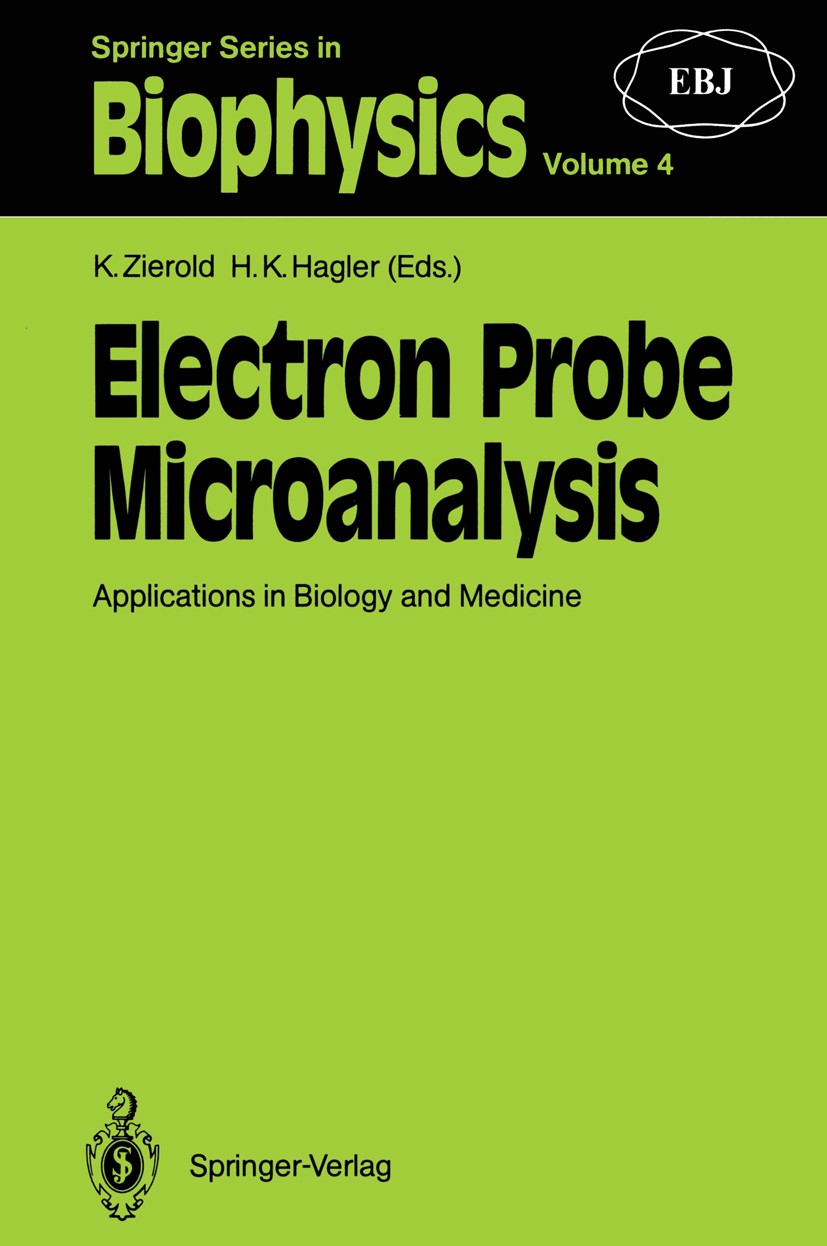| 書目名稱 | Electron Probe Microanalysis | | 副標(biāo)題 | Applications in Biol | | 編輯 | Karl Zierold,Herbert K. Hagler (Associate Professo | | 視頻video | http://file.papertrans.cn/307/306145/306145.mp4 | | 叢書名稱 | Springer Series in Biophysics | | 圖書封面 |  | | 描述 | The aim of electron probe microanalysis of biological systems is to identify, localize, and quantify elements, mass, and water in cells and tissues. The method is based on the idea that all electrons and photons emerging from an electron beam irradiated specimen contain information on its structure and composition. In particular, energy spectroscopy of X-rays and electrons after interaction of the electron beam with the specimen is used for this purpose. However, the application of this method in biology and medicine has to overcome three specific problems: 1. The principle constituent of most cell samples is water. Since liquid water is not compatible with vacuum conditions in the electron microscope, specimens have to be prepared without disturbing the other components, in parti- cular diffusible ions (elements). 2. Electron probe microanaly- sis provides physical data on either dry specimens or fully hydrated, frozen specimens. This data usually has to be con- verted into quantitative data meaningful to the cell biologist or physiologist. 3. Cells and tissues are not static but dynamic systems. Thus, for example, microanalysis of physiolo- gical processes requires sampling techn | | 出版日期 | Conference proceedings 1989 | | 關(guān)鍵詞 | X-ray; cells; diagnosis; spectroscopy; tissue | | 版次 | 1 | | doi | https://doi.org/10.1007/978-3-642-74477-8 | | isbn_softcover | 978-3-642-74479-2 | | isbn_ebook | 978-3-642-74477-8Series ISSN 0932-2353 Series E-ISSN 1868-2561 | | issn_series | 0932-2353 | | copyright | Springer-Verlag Berlin Heidelberg 1989 |
The information of publication is updating

|
|
 |Archiver|手機(jī)版|小黑屋|
派博傳思國際
( 京公網(wǎng)安備110108008328)
GMT+8, 2025-10-23 04:48
|Archiver|手機(jī)版|小黑屋|
派博傳思國際
( 京公網(wǎng)安備110108008328)
GMT+8, 2025-10-23 04:48


